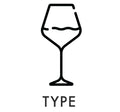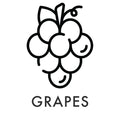Montes Alpha M 2019 750ml










Jamessuckling.com | JS 97
Published: Jun 17, 2022
Black fruit, dried herbs, spices and earthy undertones. Hints of bark and cedar, too. Full body with firm tannins that are fleshy in texture and provide excellent structure. Layered with a fruity core. Savoury and succulent finish. This needs time to come together and mellow a bit, but very serious. Try after 2024.
Winemaker
The production of Montes Alpha M is extremely limited and vintages are only released if our head winemaker, Aurelio Montes considers the quality of the wine to be of a good enough standard. Production starts by selecting individual grapes at harvest time. This wine, from Colchagua Valley, is one of the best and most awarded Chilean wines.
TASTING NOTES
Deep carmine-red colour. The complex nose shows broad notes of ripe red and black fruit, cherry syrup, figs, and blackberry. Its time in French oak barrels is reflected in the toasted notes, sweet spices, tobacco, and hint of wet earth; there's also some dairy-like toffee and dulce de leche. On the palate, the wine is balanced, with extremely silky tannins; broad in body, with well-harmonized acidity and flavours that reflect the aromas on the nose, all leading to a long, fruit-forward, and vibrant finish.
VINEYARDS
The vineyards that give rise to our Montes Alpha M are located in the Colchagua Valley, at our Finca de Apalta estate. The soils are of granitic origin and vary in clay content, depth, organic matter, and in particular, the quantity of rocks and stones found in them, which range from fluvial to glacial in origin, highlighting the great diversity of soils. Some areas also show the influence of the nearby Tinguiririca River, while higher up, material from the long-term erosion of the valley's mountainside is evident. The soils are deep in the flatter areas and thinner at the foot of the mountains, where the Cabernet Sauvignon is planted on 30? slopes. The vines are trained in a simple double Guyot system and planted at a density of 5,555 vines/hectares (2,250 per acre), giving yields of approximately 3.5-4.0 tons/hectare (1.4-1.6 ton/acre). This produces wines with characteristic concentration, good structure, outstanding colour, and excellent ageing potential.
HARVEST
April 2-May 2.
In terms of precipitation, the 2017 winter was an excellent year, with a total accumulation exceeding 500 mm in the Colchagua Valley, making it the rainiest year of the last decade. This meant we had sufficient water in our soils and reservoirs, ensuring optimal development of our vines during all their phenological stages before arriving comfortably at harvest. During spring, through mid-November, there were a few minor incidences of frost, which meant a delay in the bud break and flowering of a few weeks. Summer had moderate temperatures, with January averaging 28C. February saw a notable dip in nighttime
temperatures, again delaying the ripening of some of the red and white varieties, in some cases by 14 days compared to the previous season. We were able to harvest Cabernet Sauvignon at a very suitable pace, taking advantage of the absence of precipitation during the harvest months; this favoured excellent grape health, with very good measurements of ripeness and great varietal expression shown during fermentation.
VINIFICATION
Grapes were picked and collected in 8-kg trays at the coolest time of day. Bunches were selected before destemming. This was followed by individual grape selection, eliminating any that were shrivelled or green. The uncrushed grapes were then moved to stainless steel tanks located on the highest storey of the Apalta winery, to then fall into the tanks below and be crushed by their own weight, freeing the juice and avoiding the seeds being crushed. The grapes remained in the tank for five days at 9?C in order to extract colour and preliminary aromatics. Next, selected yeasts were added and fermentation took place at 28C, for ten days.
Post-fermentation maceration lasted for no more than 10 days, allowing the wines to become more rounded by the malolactic fermentation that took place under these conditions. Afterwards, the wine was separated from the solids, clarified by static decanting, then racked into French oak barrels, where it remained for 18 months.




